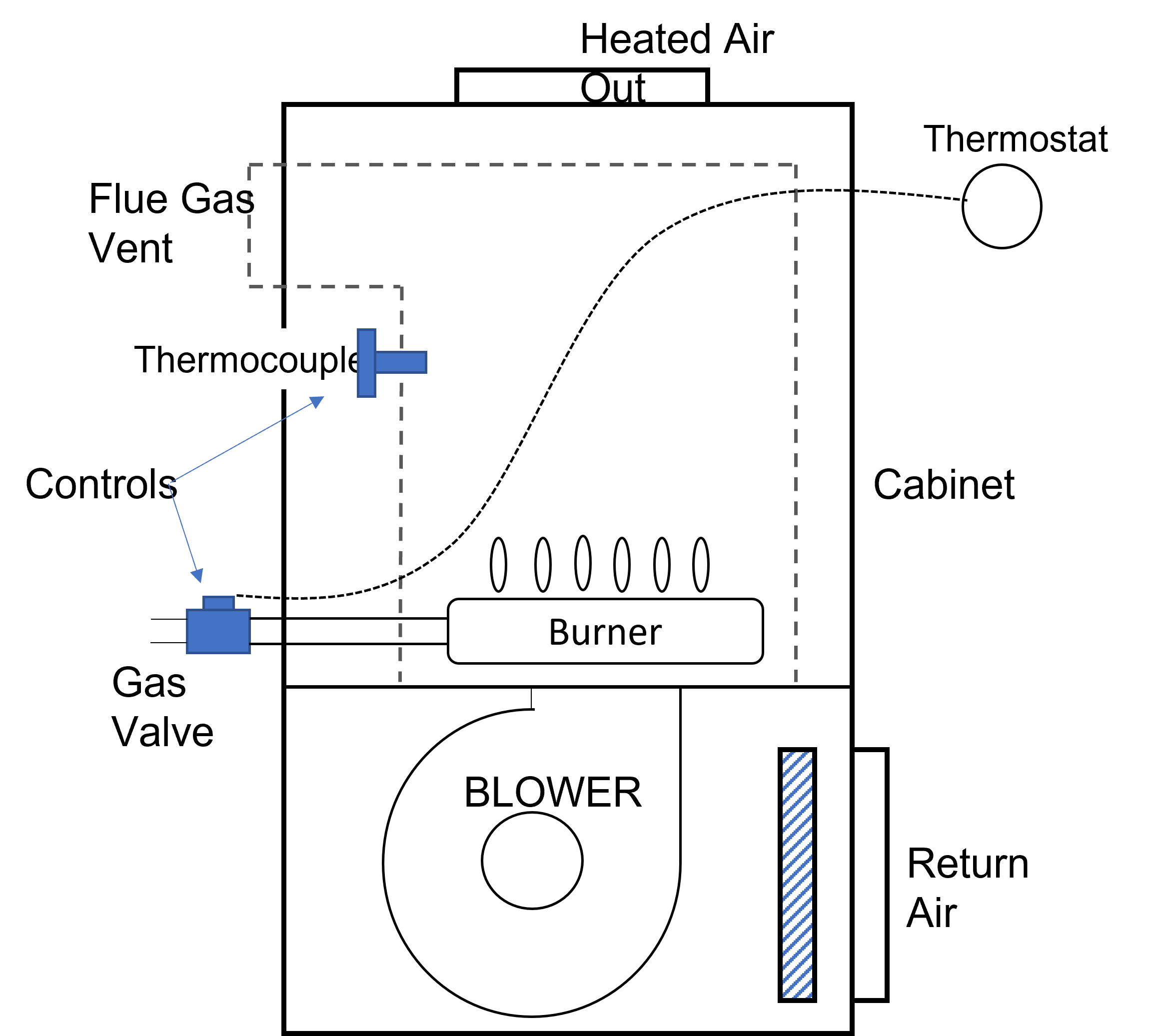Gas Furnace Efficiency Ratings
This is a two-part article discussing the categories and efficiency ratings of the two most common natural gas furnaces. This article focuses on 80 percent of furnaces. In the next article, we'll take a look at a high-efficiency furnace.
Category Ratings and Efficiencies of Natural Gas Furnaces
Most furnace manufacturers offer two types of furnaces:
Mid-efficiency Category I fan assist
High-efficiency Category IV condensing-type furnace
The minimum energy efficiency for mid-efficiency furnaces is 80 percent annual fuel utilization efficiency (AFUE). 80 percent furnaces have a flue gas temperature at least 140F above the dew point of the flue gas.
A high-efficiency furnace has flue gas temperatures below the dew point which permits condensation within the furnace to pick up extra latent heat.
There are also standard low-efficiency furnaces. However, they are no longer being manufactured. Many earlier models of standard gas furnaces are still in operation and require service. These have natural draft venting, and many use standing pilots.
Standard Low-Efficiency Gas Furnaces
Low-efficiency gas furnaces were manufactured before 1992 and a few remain in the field. With so many still in use, technicians should be familiar with some of the differences from the newer designs.
Venting
Below is a cross-sectional diagram for one of these units. One distinctive of the older design is the flow of combustion gases from the burner, past the heat exchanger (HX), and into the vent. This requires a different type of venting than newer, more efficient units that use fan assist.
Ignitors
Newer gas furnace burners use electronic igniters. Some of the older units use a standing, continuous-flame gas pilot. This pilot consumes a small amount of gas continuously.
Runner and thermocouple
There is a runner attached to the main burner. The runner carries the gas flame from the pilot to all of the burners. A thermocouple is used to sense the flame as a safety feature, turning off the gas if the flame goes out.
Natural Gas Furnace Category Ratings
There are four categories of modern gas furnaces:
Category I Gas Furnace
An appliance with a non-positive vent static pressure and vent gas temperature greater than 140F above the flue-gas dew point, avoiding excessive condensate production in the vent.
Category II Gas Furnace
An appliance with a nonpositive vent static pressure and vent gas temperature less than 140F above the flue-gas dew point can cause excessive condensate production in the vent.
Category III Gas Furnace
An appliance with a positive vent static pressure and vent gas temperature greater than 140F above the flue gas dew point, avoiding excessive condensate production in the vent.
Category IV Gas Furnace
An appliance with a positive vent static pressure and vent gas temperature less than 140F above the flue-gas dew point can cause excessive condensate production in the vent.
Category I Furnaces
Category I furnaces are divided into natural draft and fan-assisted. Most furnaces sold today are Category I, fan-assisted.
The fan does not produce a positive vent pressure because it is just large enough to overcome the resistance of the HX. A benefit of the induced draft fan-assisted furnace is that the HX operates in a negative pressure.
The negative pressure in the HX ensures added safety for the homeowner. If a hole develops in the HX, air is pulled into the HX instead of harmful exhaust gases escaping into your home.
Category II and Category III Furnaces
Category II and Category III furnaces are rarely used. They require special vent materials. It is a special high-temperature plastic vent material that can be very costly. This venting material is no longer manufactured due to high failure rates and the resulting legal action.
Category IV Furnaces
Category IV furnaces (high-efficiency furnaces) are very common. They are the 90 percent AFUE condensing furnaces. PVC can be used as a vent material because the flue gas is relatively cool.
What are AFUE ratings?
AFUE, or Annual Fuel Utilization Efficiency, measures how efficiently a furnace converts fuel to heat energy. It determines how much fuel your furnace is turning into heat. In a mid-efficiency furnace, 80% of the fuel is being turned into heat.
Mid-Efficiency Furnaces (80 Percent AFUE)
Furnace manufacturers achieve an energy efficiency of 80 percent by:
Eliminating the pilot light
Improving HX efficiency, and
Adding an induced-draft blower.
The internal components of a mid-efficiency furnace include the following:
The inducer blower assembly
The pressure switch
The gas control valve
The burner assembly
The blower door safety switch
The control box
The air filter retainer
The air filter
The wraparound casing
The heat exchanger
The blower and blower motor
When 80 percent furnaces were being introduced, many furnaces around had efficiencies in the 50-60 percent range. 80 percent furnaces were a midpoint in efficiency and cost between the traditional standing-pilot, natural-draft furnace, and the high-efficiency gas furnace. 80 percent furnaces are most manufacturers’ bottom line.
80 Percent AFUE Furnace Product Data
The following information for your new heating system will be supplied by the manufacturer. The technician needs to check the product data of the new gas furnace at the time of startup and during service calls following installation. This information appears on the nameplate:
Minimum gas-line pressure
Maximum gas-line pressure
Manifold gas pressure
Temperature rise
Electrical characteristics
Input capacity
Output capacity
These units, primarily designed for heating, can be combined with several accessories, such as a cooling coil, humidifier, or electronic air cleaner.
The 80 percent AFUE furnaces have output ranges of 35,000 BTU/hr to 124,000 BTU/hr.
Summary
Understanding your heating and air conditioning ratings and design will help you make better decisions for the comfort of your home. You will be able to weigh upfront costs against monthly energy bills. The purchase price of the right furnace makes sense when compared to the savings on utility bills.
More about furnace energy efficiency ratings in the next article.




